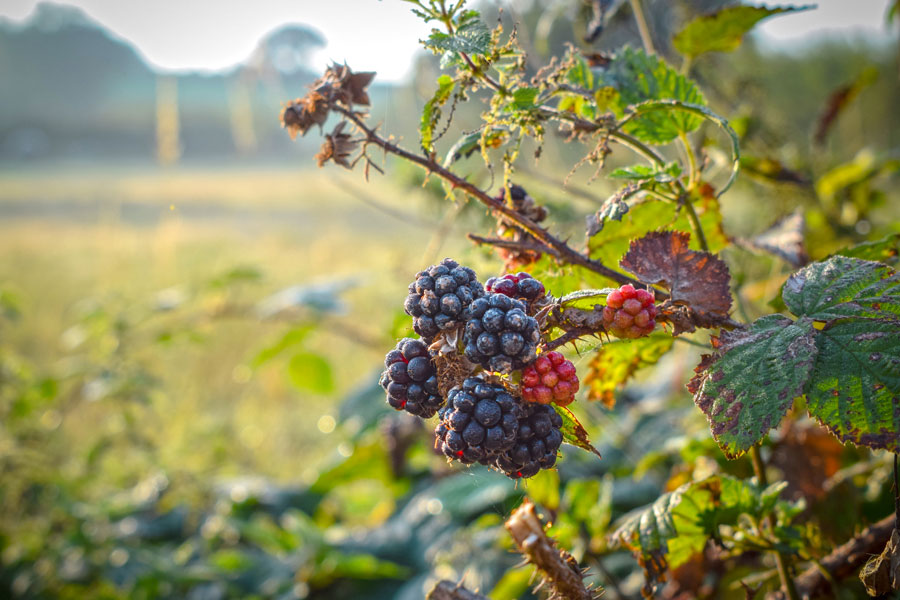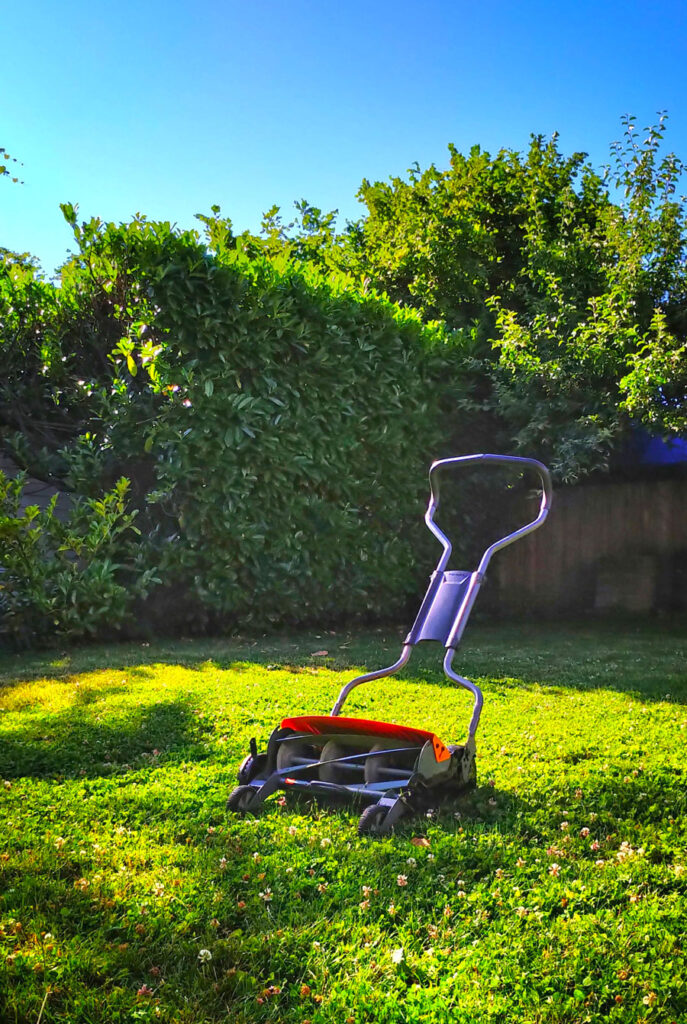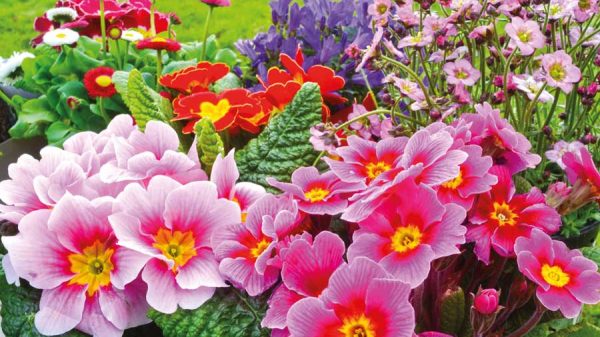We are well into harvesting produce from the vegetable garden, preparing and storing to keep us going throughout the coming months. The nights are definitely getting cooler, and some mornings there is a distinct nip in the air. Regular showers make planning work in the garden a little challenging but the changing colour and glints of sunshine remind me that autumn can be a beautiful time of year.
Don’t be in a rush to cut plants back although flowers and stems have turned varying shades of strawy brown and golden. Providing they are still stout and standing upright they have a quality that will maintain structural interest contrasting with the ripening berries of shrubs and trees. I only cut back those perennials that have collapsed or bent in an unsightly manner, as many provide seed for the birds and a place for insects such as ladybirds to overwinter.
As the pace of growth slows in the garden my attention moves towards training and pruning unruly plants, completing repairs to failing fences and continuing outstanding jobs such as laying paths and building garden features.
We are right in the middle of bulb planting season with nurseries and garden centres bulging at the seams with bulbs, corms and tubers that promise a floral extravaganza next spring and early summer. Take your time to prepare the planting area adding horticultural grit if your soil is a little heavy and wet. I like to add a little bone meal to the planting area which helps encourage a good root system. Most bulbs available at this time of year can be planted straight away but I would leave tulips until the end of the month and into next month as the cooler soil temperatures discourage fungal attack and encourage root growth rather than soft shoots.
We plant up quite a few containers with selections of tulips which will flower over a longer period next spring and can be moved around taking advantage of more sheltered areas of the garden closer to the house.
I am often asked about pruning and training fruit and one that many shy away from is the blackberry and its relatives. Many of which grow at an alarming rate producing incredibly long new shoots every year and can quickly develop into a thick impenetrable tangle of thorny stems. Understanding the growth habit is the first lesson, The long arching shoots produced this summer will provide the framework for fruiting next year, and the shoots that have flowered and fruited this year can be cut down to 5cm (2 inches).

Whilst there are some thornless cultivars, most blackberries are very thorny so ideally you should wear gauntlet type gardening gloves when pruning. Take your time and carefully remove the old fruiting stems by cutting short sections off until you have reached 5cm (2 inches) as trying to remove the flowering stem in one go risks damaging the new ones you want to keep. once the old stems are removed then look at the remaining new stems and select the strongest removing short or spindly ones down to 5cm (2 inches). the remaining stems should be tied onto the support frame (fence or wire) in an arching pattern allowing at least 30cm (12 inches) between each stem to allow fruit development next year. An established plant should be able to produce up to 16 good fruiting canes each year and can take up a 4 – 5m (4-5 yard) length of fence. Next spring as growth commences apply a handful of general fertiliser around the base of the plant and keep the soil moist. Watering particularly in dry weather and as the fruit develops will improve the quality and taste of the fruit.

Looking after your lawn can be as time consuming as the rest of the garden especially if you like a weed free, manicured effect like the fine sports turf seen on golf courses, but if you just want an area of green fairly durable space where you can allow people to relax or play then maybe it doesn’t need to be quite so pristine. We allow low growing native species of plant to mingle through our lawn, a little speedwell, the odd buttercup, small colony of clover and patch of daisies adds durability to the lawn and a little diversity for insects, so long as you don’t cut too close accepting a height of about 35cm (1.5 inches) these will flower and add interest too. If you have space to leave an area uncut then thats great but bear in mind that at some point you will have to cut and tidy it up. A light raking with a wire rake removing dead grass is good allowing the air to circulate and discourages fungal attack. Lawn feeds for autumn contain more potash and potassium which encourage root growth and strengthens the grass to survive through the colder months. Don’t be tempted to use up summer lawn feed as it will encourage soft growth which is more susceptible to disease attack.
Next month, ( it’s ‘bare root’ planting season, growing garlic and protecting tender perennials.)







